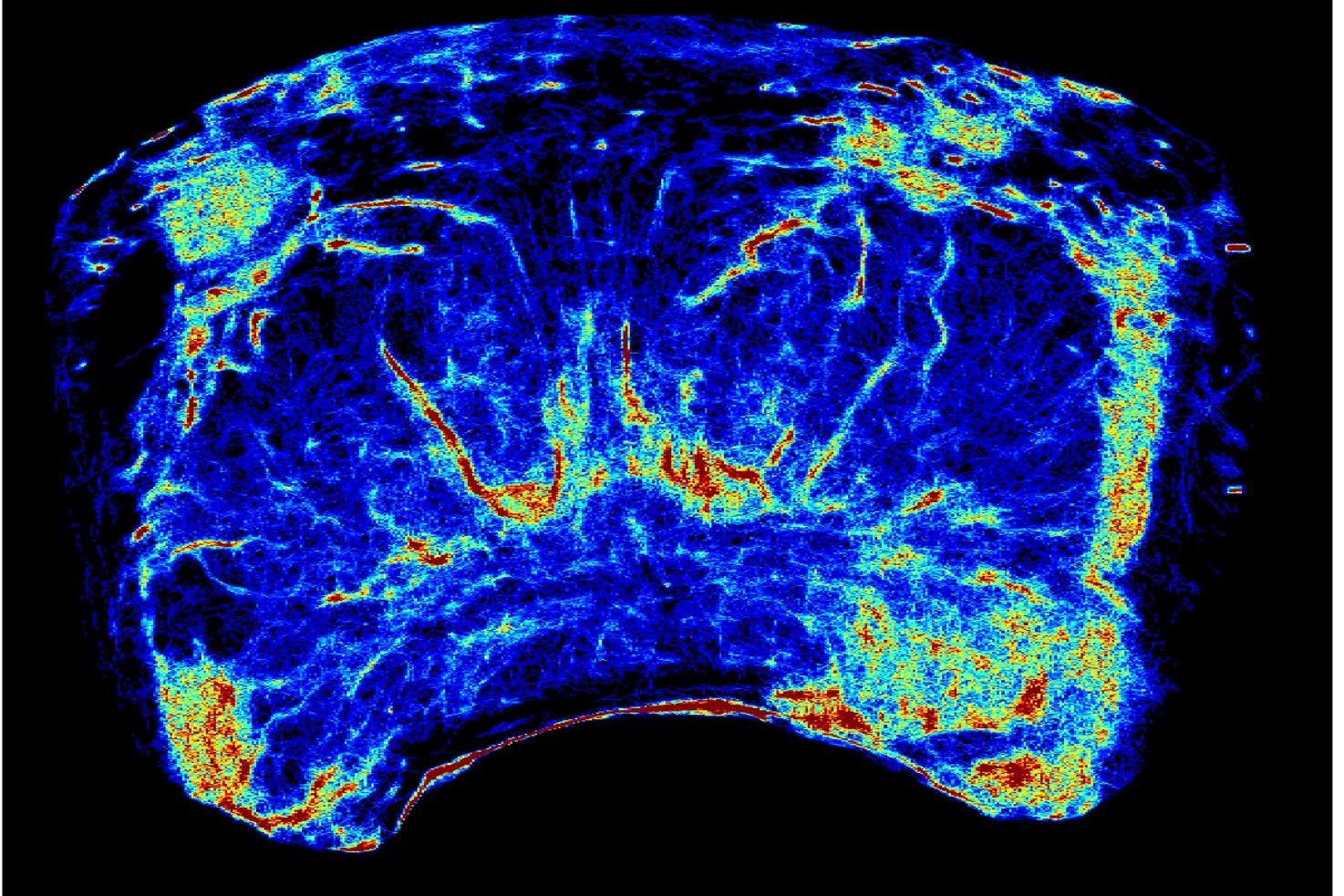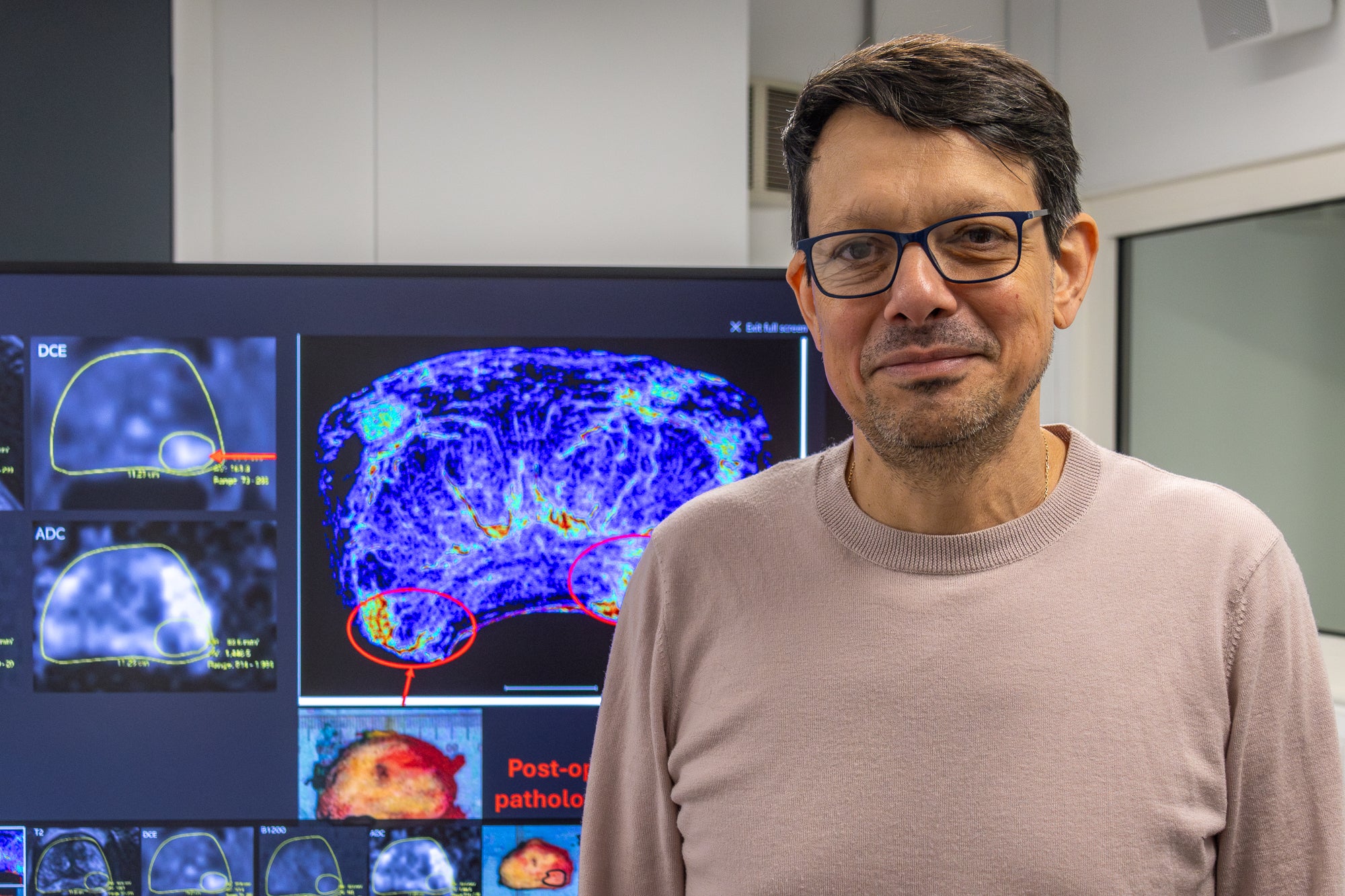
A prostate cancer imaging breakthrough could cut waiting times after “extremely encouraging” results in its first clinical trials.
The new approach, which uses existing ultrasound technology, demonstrated an initial 94% sensitivity rate in tumour detection, and the test is delivered in under 20 minutes.
The cost of using ultrasounds tech costs around 10% of MRI scanning, which means doctors can now better guide prostate biopsies and focal therapy – which destroys cancer cells, the research team said.
One in eight men will be diagnosed with prostate cancer in their lifetime, with around 52,000 diagnoses in the UK each year (144 a day).
Researchers say the current means of testing, called a prostate specific antigen (PSA), is unreliable and means men are sent for expensive MRI scans which can come with long waiting lists.
Up to 28% of clinically significant tumours are missed, according to the research team, and one in two individuals with positive MRI findings receive a negative biopsy result.
Less Grey Imaging Ltd, a spin-out from Heriot-Watt University, says the technology offers clinicians up to a 20-fold increase in resolution compared with MRIs – which they say provide a grey and difficult-to-read image.
The new imaging test begins by injecting a commonly used contrast agent into a vein that contains millions of tiny and harmless microbubbles that travel through the patient’s bloodstream to the prostate.

The team uses a technique known as super resolution ultrasound imaging (SRUI) to track these microbubbles as they flow inside the prostate.
Due to the altered blood flow in cancerous tissue, the image highlights previously unseen tumours, enabling earlier diagnosis.
Dr George Papageorgiou, chief executive of Less Grey Imaging, said: “Our initial clinical findings in prostate imaging align well with histopathology, highlighting its potential to reliably detect clinically significant prostate cancer.
“Currently, prostate cancer diagnosis varies widely across the country, with many patients being diagnosed too late for curative treatment.
“By integrating ultrasound more prominently into the diagnostic pathway, we can ensure equal opportunities for early diagnosis across all regions of the UK.
“Less Grey Imaging’s mission is to revolutionise prostate imaging by delivering clarity and precision. Urologists will have an imaging tool that enables accurate diagnoses and quicker decision-making.”
He added: “Our software deploys existing ultrasound equipment to enhance image quality down to microscopic detail.
“By minimising reliance on radiologist assessment, we intend to streamline workflows, reduce NHS costs, and improve patient efficiency.”
The potential of the technology has been recognised by Innovate UK, which awarded the company a £370,000 grant.
The UK has a higher cancer mortality rate compared with several other developed countries, with the Darzi report, which reviewed the NHS and was published in September 2024, revealing that waiting times targets for the first treatment for cancer have not been met since December 2015.

Professor Vassilis Sboros, from Heriot-Watt University and co-founder of Less Grey Imaging, explained how the technique can help support an NHS that is fit for the future.
He said: “This is exactly what the new Government needs to tackle the challenges facing the NHS.
“Back in 2019, we proved the concept worked in our lab but now we have shown it works during our initial patient trials.
“It’s just like looking inside the body with a microscope, allowing clinicians to see 20 times more detail than before.
“Even concealed tumours are possible to identify.
“With one man dying from prostate cancer every 45 minutes in the UK, we hope earlier detection will radically improve treatment outcomes, saving lives while reducing the number of people sent for unnecessary and often risky tests.”
Professor Alan McNeill, a consultant urological surgeon at the Western General Hospital, Edinburgh, and founder trustee of charity Prostate Scotland, said: “The initial trial results are extremely encouraging, providing really useful information for the diagnosis and treatment of prostate cancer.
“This is the most common cancer in men but, if it is caught early while the cancer remains within the prostate, it can be cured in the majority of cases.”
He added: “Nearly every week, my colleagues and I meet men in their 50s or early 60s suffering from advanced prostate cancer that leaves them with fewer treatment options.
“We continue to raise awareness and encourage earlier diagnosis for all men.”
Gary Tait was treated for prostate cancer five years ago, and is now chairman of Edinburgh & Lothian Prostate Cancer Support Group.
He said: “From the perspective of men who are unaware of a developing tumour in their prostate, this improved method of diagnosis could lead to earlier treatment which improves the likelihood of a good outcome.
“We fully support the development of this new technology which raises the possibility of enabling more men to be both diagnosed and treated earlier than they can be at present.”







